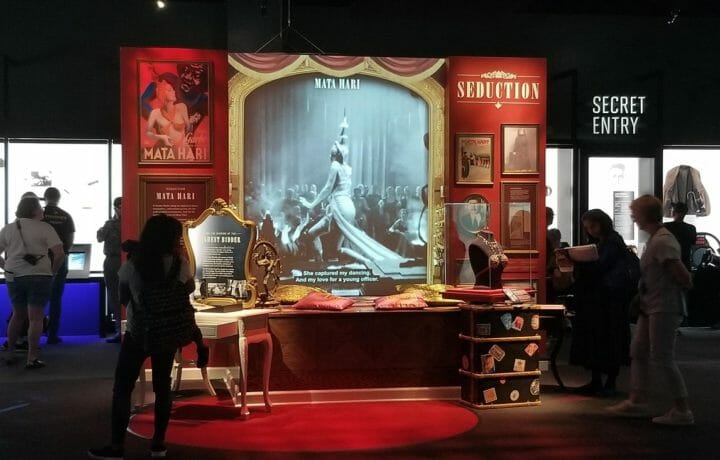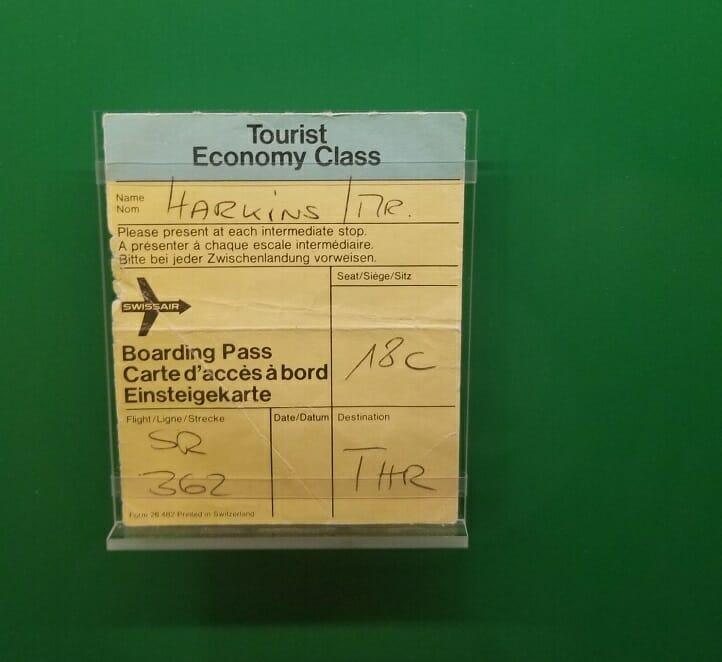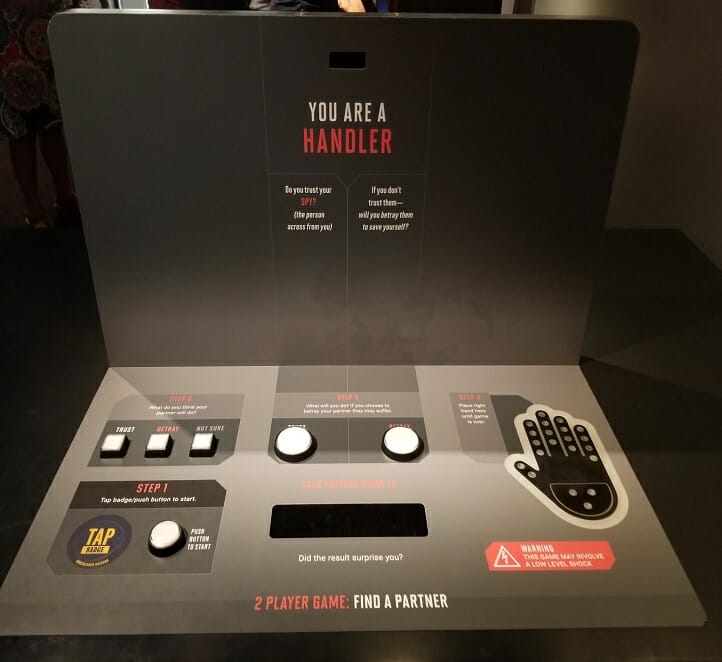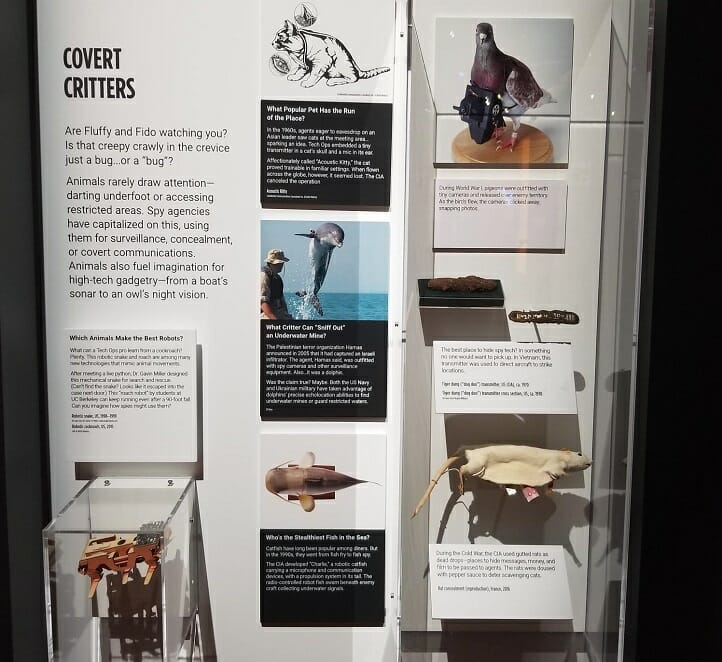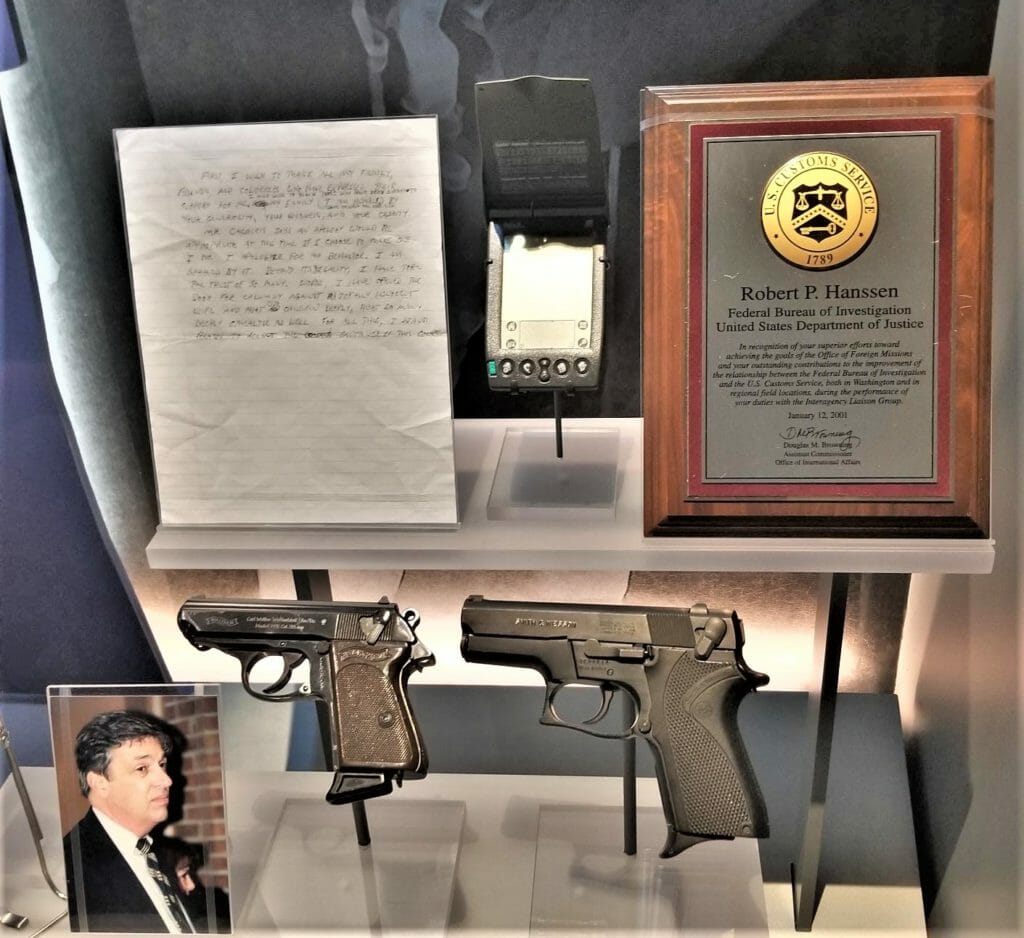Want to see a bugged shoe, makeup compact, or can of shaving cream? Mata Hari’s bodice? A German Enigma machine? Or the axe that killed Leon Trotsky? Then the new International Spy Museum is the place to be. The museum recently moved from its original location in Washington, D.C’s Chinatown to L’Enfant Plaza. The new International Spy Museum boasts 32,000 sq. ft. of exhibit space – nearly double its old size. With all that new space, the museum is chock full of new and old pieces and exhibits to delight visitors and provoke them to thought. Here are just five of the must-see items at the new International Spy Museum.
1. JFK’s 8th Grade Report Card
Anyone familiar with espionage – or world history – can tell you that psychology is a key tool in understanding or anticipating the moves of your enemy. That truth is underscored in the new museum’s display exploring the character and psychology of Cold War-era leaders John F. Kennedy and Nikita Khrushchev.
The exhibit does an excellent job of highlighting just how much the personalities of political and intelligence leaders influence world history. Knowing what makes your adversary tick is key to understanding their next move, how far you can push them, and how they will react to pressure. In this case, the Soviets were interested in Kennedy’s report cards as a greater picture of who he was as a man. Though he attended the most prestigious schools, his lackluster grades show he was an average student. The exhibit also shows how the Soviets also took JFK’s military service and the death of his brother into account as they sized up their adversary.
The exhibit also features an extensive “Psychiatric Personality Study of Fidel Castro.” The report offers observations like, “Castro’s Egoism is his Achilles heel” and “Fidel Castro is not ‘crazy,’ but he is so highly neurotic and unstable a personality as to be quite vulnerable to certain kinds of psychological pressure.”
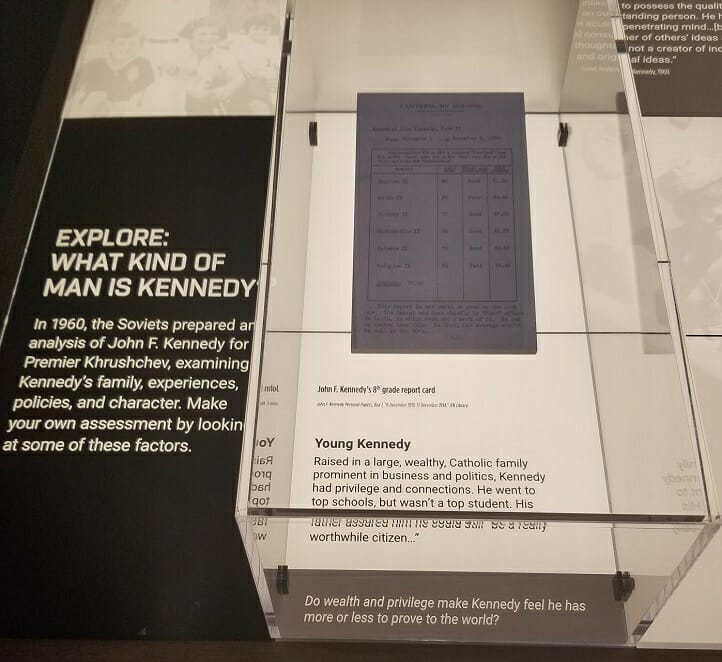
2. Tony Mendez’ Plane Ticket to Iran for the “Argo” Hostage exfiltration
Tony Mendez showed great interest and talent in both art and magic tricks as a child. These skills eventually led him to a long, extremely successful career as an agent for the CIA. His forgery and sleight-of-hand skills would serve on many operations in his 25-year career – the most famous was the successful exfiltration of 6 U.S. hostages from Iran, which inspired the book and movie “Argo.”
During the Iranian revolution in 1979, Iranian students captured U.S. Embassy personnel in Tehran and held them hostage for over a year. But unbeknownst to the revolutionaries, six diplomats had successfully escaped and were hiding in the home of the Canadian Ambassador. Mendez, the CIA’s Chief of Disguise, was tasked with finding a plausible cover story to explain the diplomats’ presence in the country and ensure and their safe escape. Their foolproof cover? They were a Canadian film crew in Iran to scout locations for the made-up movie “Argo.”
If you’re unfamiliar with the story, you’re in for a treat. For those familiar with the story, you’ll get to see the movie script, Mendez’ notes and letters on the case, and of course, the plane ticket that started the whole operation.
3. Engaging Interactive Displays for adults and children
The museum does an excellent job of offering a tactile, engaging experience for visitors of all ages. All visitors are issued a badge, a “cover,” and a “code word” as they enter the museum. The badge can then be scanned in various locations throughout the museum, including interactive touch screens that allow you to continue your “mission” throughout the museum.
There are also many other tactile elements. Guests can spin various images on the wall of propaganda and disinformation (like the letters on “Wheel of Fortune”) for explanations of the image’s history and intended purpose. There are also games that pit spies against spy handlers, challenging guests to see if they can trust their counterparts (see image below). For visitors wishing to test their spy mettle and upper body strength, you can also test how long you could hold on to the bottom of an escaping helicopter à la James Bond.
4. “Covert Critters” and the role of animals in espionage
We’ve all heard of “Secret Squirrels,” but did you know there have also been secret rats, cats, pigeons and dolphins? In the 1960s, CIA agents tried to “bug” a house cat so it could surreptitiously record a meeting of Asian leaders. Pigeons were used to do photo recon by flying over enemy territory during WWI. And dead rats were used as easily concealed drop sites by the CIA during the Cold War. As we know from recent headlines, using marine life to spy on the enemy is a practice still alive and well.
It’s a fairly small display among the museum’s spy gadget collection, but you’ll also see animals given their due occasionally in other displays throughout the museum. It’s a fun sight for kids and a reminder of the creative lengths to which spies throughout history have gone to get the information they need.
5. Robert Hanssen’s Palm Pilot
For this visitor, one piece of spy tech stuck out: Robert Hanssen’s Palm Pilot. The granddaddy of the iPhone and Blackberry, the Palm Pilot was basically a glorified digital calendar. However, for a professional in the late 1990s or early 2000s, a Palm Pilot was a major power play. Anyone who was anyone had one. It was a mark of professional importance – that was the argument that Hanssen made to Eric O’Neill, the young undercover agent who helped catch the notorious FBI turncoat.
After reading O’Neill’s new book Gray Day, detailing the investigation into Hanssen and his decades of spying for Russia and the USSR, seeing Hanssen’s Palm Pilot on display offered a small bit of catharsis. The arrogant, meticulous Hanssen kept it on him at all times and bragged that he’d encrypted it himself and that “the idiots” at the FBI – his coworkers – could never decrypt it. Thanks to some clever misdirection by O’Neill and his teammates at the FBI, the device was swiped from Hanssen and hacked by the FBI. The device contained the time and location for Hanssen’s last scheduled drop to the Russians after over 20 years of treason. On the scheduled date, the FBI staked out the location, swarmed Hanssen after the drop was made, and captured and brought him to justice.
Hanssen’s arrogance and betrayal cost lives and caused untold damage to the nation. Having his prized little toy behind glass for the world to see offers a sweet bit of justice.
Bonus: KGB Spy and ClearanceJobs Contributor Jack Barsky
Ever wondered if the stuff you see in spy movies is real? Watch famous spies dispel myths from the fictional accounts that depict them. Our personal favorite, of course, is ClearanceJobs contributor Jack Barsky. As a spy in the KGB Illegals program, Barsky lived the undercover life depicted in FX’s The Americans.
